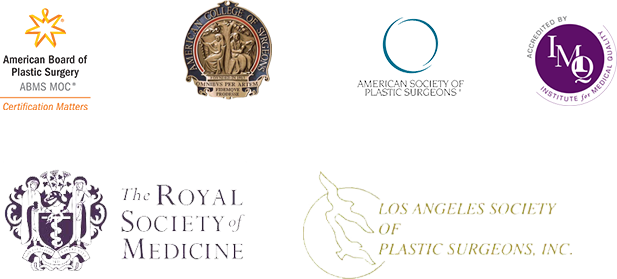Posted in Plastic Surgery
Lower lid rejuvenation is one of the most requested but challenging procedures in plastic surgery today. The classical approach to treating sagging skin in the lower eyelid is to cut it out with a lower blepharoplasty procedure. However, this approach has changed in the last few years. We have realized that an aggressive skin and fat excision will, over time, create a skeletonized, hollow look under the eye.
The focus has shifted toward identifying all the elements of the aging lower lid and treating them each in a different way. To date, though, the lower eyelid remains one of the most difficult and unforgiving areas to treat.
This is true for multiple reasons. First, the skin of the lower lid is very, very thin and cannot withstand even the most minimal error. Second, the position of the lower lid with respect to the eye is crucial to the patient’s appearance and even a millimeter too high or low can dramatically change a patient’s look. Too high, and the patient appears to have smaller eyes. Too low, and the sclera will show – which is very difficult to correct. Three, two separate issues have to be addressed – a volume shift of the existing fat due to gravity and a volume loss due to atrophy of the fat that is secondary to aging. Four, there is a texture problem with the skin under the eye that it is often perceived by the patient as loose skin when in fact it is not. Fifth, the look of the lower eyelid area can change dramatically when the patient is in repose versus animation. Particularly when the patient is in animation because the motion of orbicularis and zigomaticus muscles, (the facial muscles involving in closing the eye and smiling) can give a false impression of excess skin when there isn’t any. This can fool even the most experienced plastic surgeon so it is crucial to be able recognize that. Just as crucial, is to be able to recognize that Botox has a role in minimizing and preventing crow’s feet and lines and often works in conjunction with surgery.
I have introduced new surgical approaches to lower eyelid rejuvenation. Among the most innovating, is the pinch blepharoplasty where just a ”pinch” of skin is removed without violating the orbicularis muscle (which is one of the most common causes of morbidity). This procedure also allows for a very short downtime. Sometimes this approach is combined with a lateral cantopexy to assure that the lower lid does not drop and change position. Often, a transconjunctival blepharoplasty is used to address an excess of fat which is not removed but repositioned.
The volume deficit can be addressed with a very conservative fat grafting procedure, but again, great caution must be used. This type of fat grafting must be done with meticulous technique and great accuracy. The fat must be placed almost under the muscle in small “pearls” (drops) to avoid irregular contouring – a complication that is very difficult, if not impossible, to treat.
One procedure which has attracted a lot of attention is stem cell lower eyelid rejuvenation. The idea behind this procedure is to rejuvenate and regenerate the lower lid skin which is usually more wrinkled due to the intense action of the eyelid muscles. Also, the lower lid skin often has poor texture due to sun exposure, environmental, genetic and hormonal factors – all which can be addressed with the stem cell procedure. Injections of stem cells derived by the PRP (platelet rich plasma) can be potentially very effective in this area and virtually complications free!
